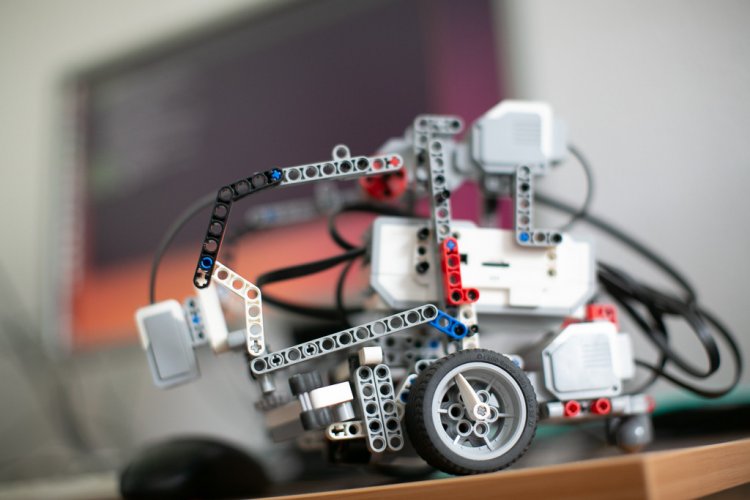In the Year of Science and Technology, the development of robotics is especially important for the modern society. Everything that humanity now enjoys is related to new technologies. The concept of robotics is closely associated today with the concepts of artificial intelligence and machine learning. Various kinds of robotics are widely used in all areas including spaceflight, medicine, industry, etc.
World’s First Robot
Predecessors of world’s first robots can be seen in mechanical devices dating back to the Antiquity (for example, a flying wooden dove, a gesturing statue). None of such contrivances were particularly successful at the time.
Development of robotics continued in the Middle Ages. Many watchmakers of Europe and Russia created automatic machines (so-called mechanical inventions) in the form of people, animals or angels to amuse passers-by. This was when complex human-like and zoomorphic automatons appeared: lions were shown as growling while birds sang. At that time, the famous scientist Leonardo da Vinci invented a mechanical lion. It could walk a few steps, and when it stopped, a door opened at his side. Another invention of the great genius presented in 1495 at the court of Lodovico Sforza comprised a figure of a knight in plate armor which, to everyone’s surprise, could move, sit down and even open its mouth. It was the world’s first humanlike robot.
In the 18th century, watchmaker Pierre Jaquet-Droz (founder of the famous, centuries-old Jaquet Droz brand of Swiss watches) was designing interior watches and automatons, along with non-electric devices – later to be called androids – that imitated the movements and sounds of people and animals.
Pierre Jaquet-Droz went as far as to invent the first programmable android robot. Such a robot was named “The Scribe” – its mechanism enabled it to write down any text up to 40 characters long. There were also “The Artist” that could portrait people or draw animals on paper, and a “Musician Girl” that performed up to 5 different tunes a small organ while moving its head with an elegant bow at the end of the performance.
In 1936, then-schoolboy Vadim Matskevich created the first Soviet android robot, V2M. He made his invention in the form of a humanlike figure that raised its arm. But the motor was not powerful enough for robot’s arm to rise above its shoulder. The boy showcased his model at the 1937 World Exhibition in Paris where he was awarded a special prize. German specialists from a nearby booth came to be photographed with a robot raising its arm in what looked like a Nazi salute. The designer was promptly accused of his politically incorrect attitude.
It is known that the definition of “robotics” was first applied by American fiction writer, biochemist and science popularizer Isaac Asimov in 1941. His science-fiction story The Liar told about the problems of positron robots. Asimov also proposed the famous three laws of robotics. And credit for coining the word “robot” belongs to the Czech writer Karel Čapek (Rossum’s Universal Robots, 1920).
Robots were not widely known until the 20th century. It was in the 1950s that two American engineers, George Devol and Joseph Engelberger, introduced the world’s first programmable robot that performed the most complex tasks on an assembly line at General Motors. Also, in the 1950s, mechanical manipulators were developed for working with radioactive materials that repeated the movement of human hands.
A manipulator for laying metal sheets was invented in the Russian city of Voronezh in 1966. And in 1968, engineering researchers in Leningrad designed Manta, an underwater robot with a sensitive capture device that had seen many improvements in the course of its operation. In 1969, the Central Research and Technology Institute of the Defense Industry Ministry developed its Universal 50 industrial robot. These models were later fitted with automated systems for operation at large-scale manufacturing facilities.
Some time later, in 1987, the International Robotics Federation was established to further the development of modern robotics defining its main objective as carrying out research and development in the field of robotics around the world.
In 2000, Japanese scientists from Honda presented the world’s first human-like android robot that could easily replicate simple human movements.
Classification of Robots
As a rule, robots are classified by the field of their application: industrial robots, research robots, training robots, and special-purpose robots for particular fields. All these inventions are divided into two main classes: manipulators and mobile robots
A model robot created at the Faculty of Information Technologies and Programming of the St. Petersburg State National Research University of Information Technology, Mechanics and Optics (ITMO). Author: Alexey Kashevnik, Cand. Tech. Sci., Associate Professor of ITMO.
Manipulator robots consist of an actuating device – a manipulator with multiple degrees of freedom and programmatic control.Such devices serve to perform movements and control functions in the production process. They are widespread in the manufacturing of machinery and instruments.
Mobile robots are another kind of automatic machines, except that they have a mobile internal chassis with automatically controlled actuators. They can be wheeled, walking or caterpillar-driven (crawling, floating and flying robots have already been invented).
Where are modern robots used?
Industry: robots replace humans by performing routine, energy-demanding, dangerous operations. Such devices do not possess artificial intelligence but are programmed to repeat identical actions.
Medicine: exoskeletons designed for people with musculoskeletal disabilities. Developments are under way to create mini-robots that would be implanted into the human body to maintain the quality of life (for example, pacemakers). A robotic surgical complex for performing urological surgery has been recently put into use in Russia.
Spaceflight: Manipulator robots built into spacecraft do their job here.
Agriculture: robots provide fully automated maintenance of plants and breeding crops. In this area, tests are underway of robotic greenhouses for the cultivation of vegetables.
Fire safety: robotic installations used for fire suppression. Such a robot is able of identifying the source of the fire, computing coordinates, communicating them to specialists and extinguishing the fire – all on its own.
Faced by variety of robotics extensively applied today in literally every sphere, one might ask: “Won’t robots replace humans soon?” It is quite hard to find a single answer to this question. Most experts would say: “People must simultaneously expand and deepen their knowledge and skills. This combination of latitude and depth provides an opportunity to adapt to change. If we get too overspecialized, we run the risk of losing to a robot. If we learn to adapt to change, we will benefit from artificial intelligence.”
Sources: History of Soviet Robotics.
Robotics: History. Key Tasks of Robotics.
Photo: abidal/Photo bank RU 123 RF






















